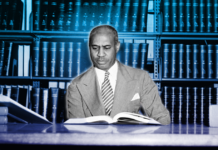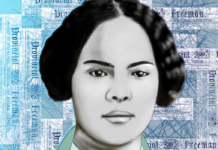“You cannot heal in the same environment you got sick in.”
-Unknown
I’m an optimist. It’s what keeps me in education all these years. In the times I’ve wavered or thought about shifting careers to become a blackjack dealer, cruise ship concierge or professional hand model, it’s been my belief in people and individuals that has kept me. Not just belief, but the belief in the best in us — in all of us.
Yet optimism wanes when it comes to the “systems” we serve. I lay in the camp of the system of education being far from broken. It’s a well-oiled machine that is producing exactly the results it’s intended to. Nothing operating this well and this smoothly and with such mass cooperation, from Brooklyn, NY, to the most rural parts of Washington State, could be broken.
I often tell people I’m model agnostic — traditional, charter, private and all models in between, it doesn’t really matter to me. They all have their pros and their cons, and as we should know, one model does not fit all. Yet, not one of them are serving the students who historically needed them. I would go so far as to say they’re not even serving the adults who historically have needed them.
I’ve spent this summer being blessed to travel from Tarboro, NC, to San Diego, Calif., and many points in between. I’ve met incredible educators doing powerful work in every setting possible, yet at the core of all of our conversation is a deep hurt and wonder if what we’re doing is even making a difference.
The hurt that is caused by the systems we serve is evident in my hometown of Seattle, where the reality of traditional schools has my alma mater and its students protesting just to get funding to have a full staff. It’s evident in the failing promise of what charter schools were supposed to bring, as the closing of some schools and the inability (and maybe unwillingness of funders) to support families and leaders of color in that sector — while continually funding white school leaders to fail forward in our communities — have brought more unfortunate examples of systemic hurt.
Dave Chappelle once quipped in regards to Hollywood, “A weak person cannot get here… Ain’t no weak people here. So, what is happening in Hollywood? Nobody knows. The worst thing to call somebody is crazy. It’s dismissive. I don’t understand this person, so they’re crazy… These people are not crazy. They’re strong people. Maybe the environment is a little sick.”
I often have the same sentiments about education. It tends to make the most rational people seem crazy. So, it begs the question, how do we heal in these sick environments? My go-to answer is to typically just burn it all down and start anew, but we know that those efforts usually just end up looking like a new emperor in the same old clothes.
So, where does our healing come from?
- Sharing Our Stories: My belief in people leads me to believe that most of us want to do what’s right. Often times we allow “what’s always been done” to overtake what’s best for students and children in this new moment. The most agonizing portion of my professional career was when I chose to stay silent on an issue that mattered. That still haunts me. We have to have the courage to share our stories and the truths of the hurts that these systems have caused so we can create a path to healing and, equally important, change.
- Healing Circles: I mean this in the figurative and the literal. Surrounding ourselves with people who truly help us heal in this profession is important. For so many years, specifically as a Black male educator in the Pacific Northwest, I’d feel so lonely and isolated, even though I “knew better.” I never had the time to professionally connect with other educators — especially Black males.Find those networks, in your neighborhood if you can and then of course across the nation. There are so many organizations doing so much incredible work.sThen, of course, the literal: find yourself an accountability healing group. I’m still moved by the work of two powerful educators, German and Rebecca out of Los Angeles, who at a fellowship took their “pitch time” to lead us through an incredible indigenous healing circle that was the most powerful portion of the week. It showed the deep levels of hurt for educators across the country and showed the power of healing with each other.
- Exemplar Vulnerability: The poem “Who Will Cry” by Antoine Fisher is what propelled me from the offices of the U.S. Senate into education, because it resonated so deeply with me: the hurt that still lays inside of man. For so long as an educator I hid behind a menagerie of masks — the mask to be perfect as a teacher, the mask to be the exemplar male and the mask of being “Black but not too Black and sometimes not Black enough.” As I grow older and examine my “why’s,” I realize that not only were all of those masks fake, but they were wholly ineffective. And most importantly, they were the models which I asked my students to follow.
One facet of my humanity as an educator I still refuse to try on is that of anger, because as a 6-6, 280-pound Black man, despite my constant smile and warm nature, I can ill afford the one moment that I become the archetype of the thing that is feared the most: “The Angry Black Man.”
While I have literally watched white colleagues, specifically women, storm down hallways cursing, throwing things, calling people out of their names, I could never dream of a reality in which I could even raise my voice above a Level 3 (unless being asked to break up a fight or lead an assembly, because, you know, gotta protect and entertain).
That said, we have to be Exemplars in our existence to those students who watch us as to what healthy emotion is and what healthy healing is, because to do anything less is robbing them of healthy examples of what it means to be human and maybe more importantly just… to be.
Upendo
-MLH
This post originally ran on the Rise up For Kids – Seattle education blog here.










